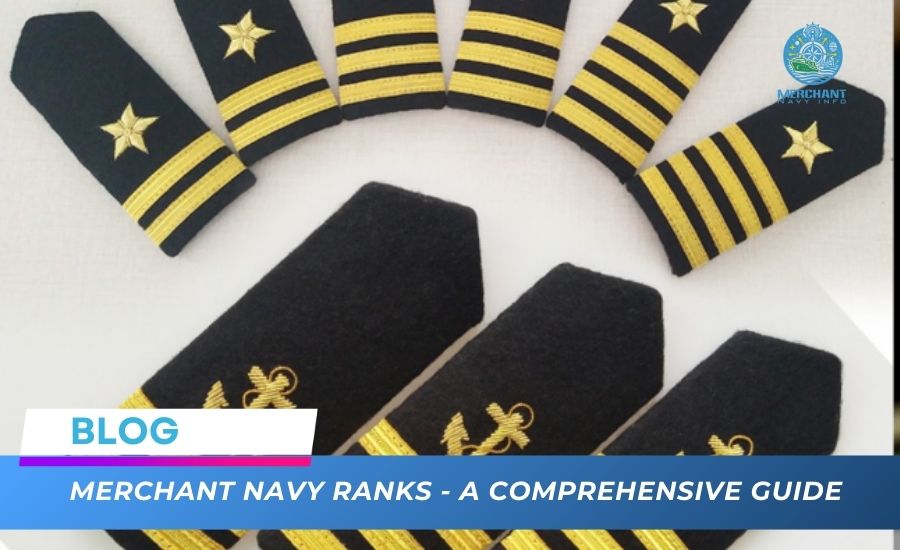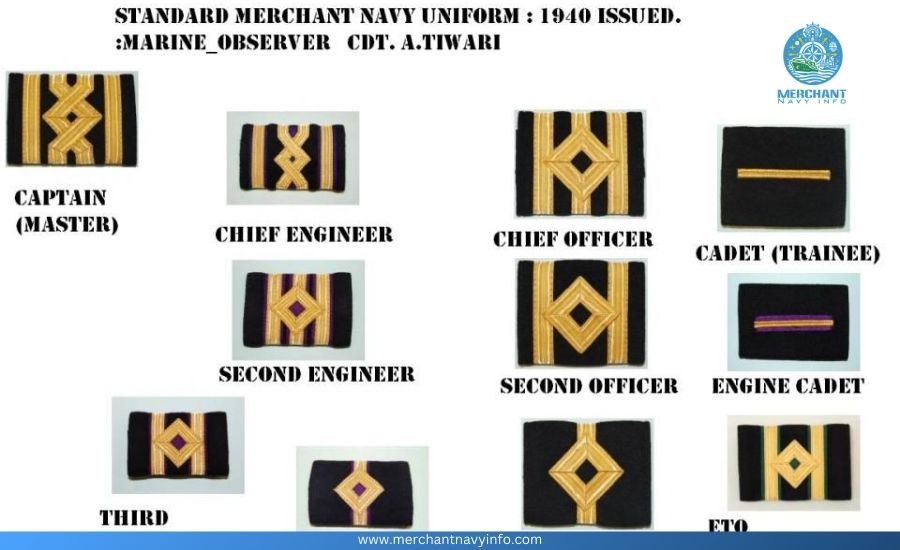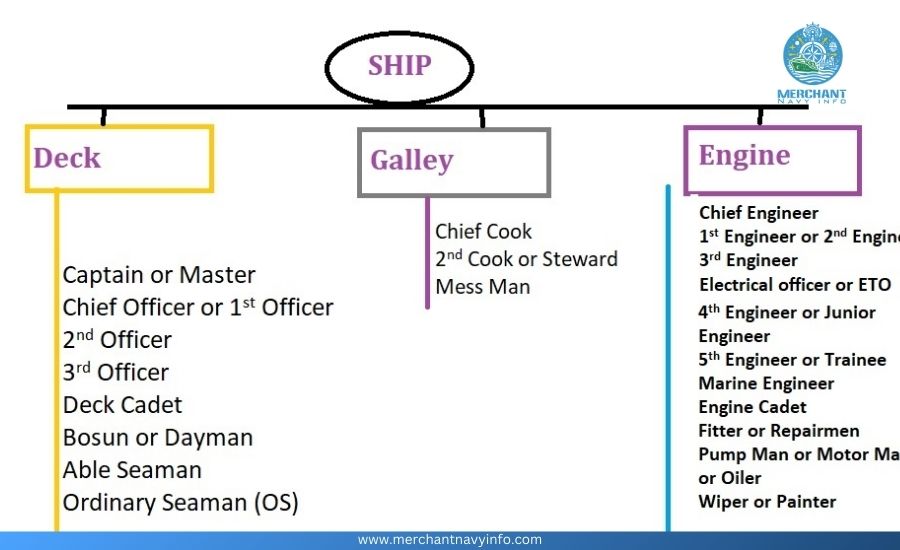
Guide to Merchant Navy Ranks
The merchant navy ranks involve a hierarchy system where sailors hold different ranks. This arrangement system ensures smooth coordination of shipboard operations and promotes proper management strategies. Being a job that requires a very high level of professionalism and where lax performance can lead to disastrous consequences, the rank system is essential for an economically viable shipboard operation model with a shore-based support framework.
The merchant navy ranking system terminology is generally accepted by shipping companies and merchant navy worldwide. The ranks and the responsibilities that come with them are very similar across the industry, with only slight variations in the names and tasks assigned to specific positions that vary from shipper to shipper and the naming system they follow. As mentioned above, they are essentially the same.
Also Read: How Ship’s Engines Works?
Generally speaking, the classification system for the merchant navy is mainly divided into the following categories:
- Deck Department
- Engine Department
- Catering Department
The bridge is the center with equipment for the merchant navy’s safe navigation and control. Due to the sophistication and peculiarities of the equipment on the bridge, the skills required for an individual to control all the equipment and safely steer the ship are essential. Sailors working in the deck section are responsible for managing the ship’s navigation and handling cargo operations and deck mooring tools.
Similarly, sailors working in a ship’s engine room are below the engine section. This mainly includes marine engineers and regular crew members responsible for operating and maintaining the ship’s machinery. The engine room is the part of the ship that provides fuel/propulsion for the entire ship, and the engine room personnel also need a specific set of skills.
The third department, catering, prepares meals for the crew and passengers and general housekeeping. The number of staff in this department (which, like other departments, falls under the captain’s authority) varies from ship to ship. Passenger ships have a much larger catering staff than cargo ships, as more people need to serve.
Consequently, the ship requires a specific merchant navy rank system to assign duties professionally and formally.
Also Read: Ultimate Guide To Pakistan Navy Ranks
Merchant Navy Ranks

Captain
The Captain (or Captain) is the ship’s highest authority and rank a person can achieve on board. Assuming full responsibility and overseeing all operations on board. The Captain is in command of the merchant navy, organizing the proper day-to-day transactions and handling the legal aspects of maritime issues. The Chief Officer will temporarily oversee the ship’s operations if the Captain is not on board.
Deck Section
- First Officer/Mr.
- Second Officer/Mr.
- Third Officer/Mr.
- Deck Student
- Deck Rating (Non-Officer)
- Captain (Class Leader)
- Welder/Mechanic (This rating serves on board the deck and engine departments)
- Able to Work Seaman (AB)
- Ordinary Seaman (OS)
Cadet Officer
First Officer/Lieutenant Officer: The First Officer is the second responsible position after the Captain. He is the Chief Officer of the deck department and executes the Captain’s orders at an operational level (although the rating itself is a more administrative position). Supervises the crew and is responsible for the various deck operations of the ship, including but not limited to the work performed on the ship’s deck daily, according to the work schedule and the transport operations performed while in port.
The First Officer prioritizes the security and safety performance of the ship and is responsible for the welfare of the crew and passengers on board (if on a passenger ship). In addition, the first mate is responsible for managing the correct operation of the structure, accommodation, cargo equipment, safety devices and firefighting equipment.
One of his repertoire duties is to act as navigational watchkeeper between 0400-0800 am and 1600-2000 pm, ensuring the vessel’s safe navigation. As he already has a lot of work to do in port, the first mate does not usually monitor the port but constantly supervises the shipping work.
Second Mate/First Mate: Second Mate
Second Engineer/1st Assistant Engineer: Responsible for the day-to-day work in the engine room and is accountable to the Chief Engineer. His duties include constant supervision of the proper functioning of all engine room mechanical systems and assigning functions to other officers and engineering staff. The Second Engineer generally monitors the engine room during the day.
Third Engineer/2nd Assistant Engineer: This position is after the Second Engineer and is responsible for the mechanical maintenance duties required by the Chief Engineer and daily guard duties. Reports to the Second Engineer.
Fourth Engineer/3rd Assistant Engineer: This is the lowest level in the engineering department. The Fourth Engineer is responsible for properly functioning the mechanical systems assigned to him and for protecting us. Reports to the Second Engineer.
Also read: Top 12 Biggest Ports in the World
Fifth Engineer/Engineering Student: The Fifth Engineer is the apprentice of the Second Engineer and assists and learns while observing and carrying out activities in the engine room. He will accompany a senior officer (usually the First Engineer) on duty.
All engine room officers report to the Second Engineer. The main goal of an engineering student on board a ship is to learn the skills required to become a qualified engineering officer in the future (bypassing the “Certificate of Competency” examination required to obtain a Chartered Engineer’s license).

The Catering Department
- Chief Cook
- Chef in Training
- Steward
Chef: The Chef reports to the ship’s catering department. You are responsible for preparing meals for the crew and passengers regularly. It is also responsible for food reserves. The Chef assists the Third Officer/Student in preparing orders for all food items to be sent to the company headquarters for purchase on board. The Chef also checks the equipment required to keep the ship’s galley area clean and free from contamination.
Apprentice Chef: The Apprentice Chef assists the Chef in preparing meals and managing supplies.
Steward: As the name suggests, the duties of a Steward include cooking and serving meals on time, cleaning and maintaining officers’ quarters, and taking inventory of supplies. The job also includes managing grocery accounts, planning menus, and recording cost control issues.
Also Read: Navy or Marines: What’s different?
Final Thoughts
It should be noted that the galley on a passenger ship will also include several other scopes. Read about the galley job here.
It is important to remember that while the shipboard hierarchy is largely the same across the industry, there can be differences depending on the naming system followed by a particular company and the type of ship in question. However, the above gives the reader a fair idea of the current rank rules for the various departments of a merchant navy.









